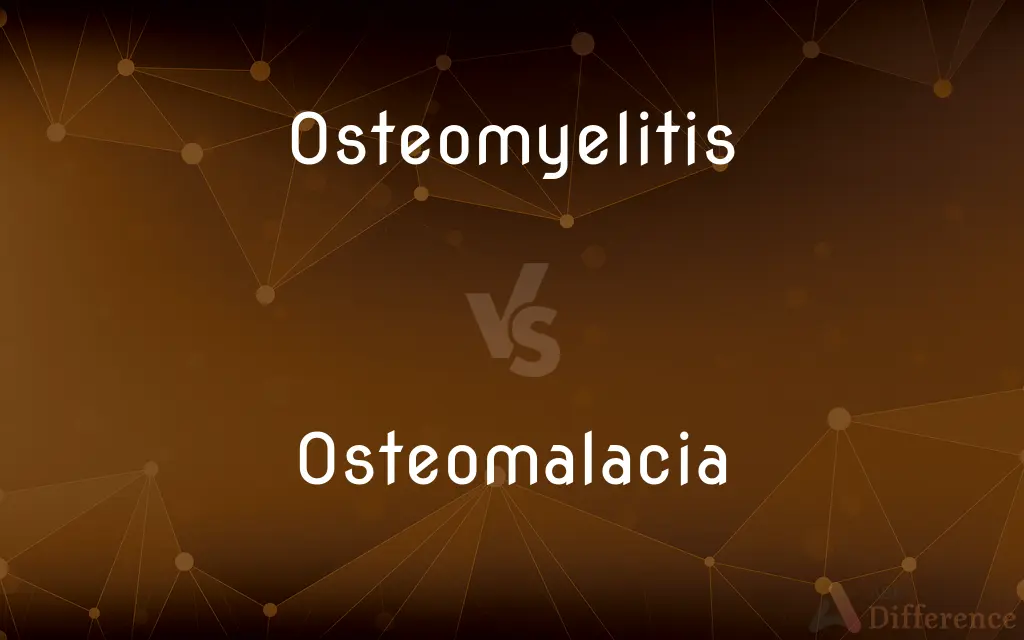Osteomyelitis vs. Osteomalacia — What's the Difference?

Difference Between Osteomyelitis and Osteomalacia
ADVERTISEMENT
Compare with Definitions
Osteomyelitis
Osteomyelitis (OM) is an infection of bone. Symptoms may include pain in a specific bone with overlying redness, fever, and weakness.
Osteomalacia
Osteomalacia is a disease characterized by the softening of the bones caused by impaired bone metabolism primarily due to inadequate levels of available phosphate, calcium, and vitamin D, or because of resorption of calcium. The impairment of bone metabolism causes inadequate bone mineralization.
Osteomyelitis
A usually bacterial infection of bone and bone marrow in which the resulting inflammation can lead to a reduction of blood supply to the bone.
Osteomalacia
A bone disease in adults analogous to rickets in children, marked by bone demineralization caused by impaired metabolism or deficiency of vitamin D or phosphorus.
Osteomyelitis
(pathology) An infection of the bone
ADVERTISEMENT
Osteomalacia
(medicine) A softening of adult bones due to inadequate mineralization; the adult equivalent of rickets
Osteomyelitis
An inflammation of bone and bone marrow (usually caused by bacterial infection)
Osteomalacia
A disease of the bones, in which they lose their earthy material, and become soft, flexible, and distorted. Also called malacia.
Osteomalacia
Abnormal softening of bones caused by deficiencies of phosphorus or calcium or vitamin D
Share Your Discovery

Previous Comparison
Proficient vs. Experienced
Next Comparison
Announcement vs. Notice













































